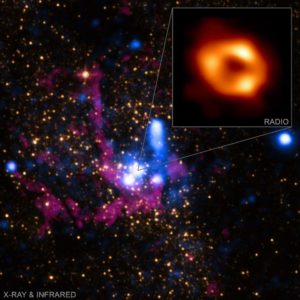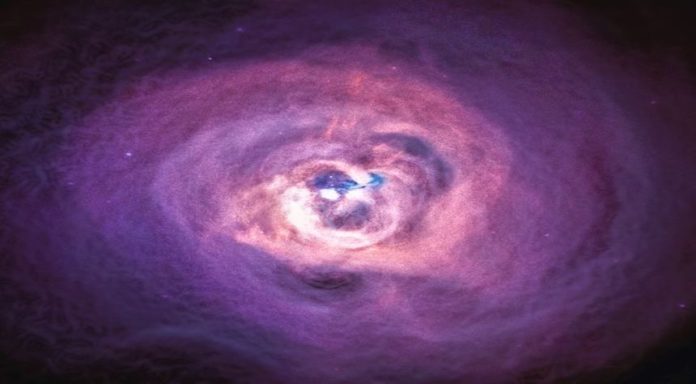The Event Horizon Telescope (EHT), captured the historic first image of Sagittarius, the supermassive dark hole at the center of our galaxy. Astronomers around the globe reacted with amazement and awe.

This is a remarkable feat using a unique instrument. The EHT can filter out dust and gas between 27,000 light-years and Sagittarius A*. This is achieved using a technique called Very Long Baseline Interferometry. It allows astronomers to combine data from different radio telescopes around the globe to make one large telescope.
The data were collected using 80 radio telescopes around the globe. More than 300 scientists participated in the experiment to image a black hole.
Space.com: “It is teeming with activity, always gurgling with turbulent energy,” Johnson said of the ring around the event horizon.
To try to explain what they were seeing, the EHT team — which is made up of more than 300 researchers across 80 institutions — performed more than 5 million supercomputer simulations to try and find one that was a match for what they observed.
“We were left with only a handful of simulations that share the features that we observe, but none of them can explain all the features,” Johnson said. These features relate to how gas is flowing onto the black hole from the turbulent ring, in an environment dominated by magnetic and gravitational fields.
Our own black hole! Astronomers have just revealed the 1st image of the supermassive black hole at the center of our Milky Way galaxy using the @ehtelescope– a planet-scale array of radio telescopes that emerged from decades of NSF support. https://t.co/bC1PZH4yD6 #ourblackhole pic.twitter.com/pd96CH3V0m
— National Science Foundation (@NSF) May 12, 2022
It is extremely difficult to believe that black holes exist. Many physicists believed they were not real, despite Einstein’s mathematical equations.
These observations were made by scientists in 2017. It took so long to get the image together.
Scientific American: It took years to get a clear image from Sagittarius A* using the petabytes of data collected during 2017’s observing run.
It’s like photographing a dancer in long exposure. It’s harder to photograph because the black hole changes so quickly. Astronomers predict that they will be able to film Sagittarius A* in the future as more observatories are added to the EHT.
How would it look? Video of matter falling into the abyss after it circling the drain.
It is a shame Stephen Hawking did not live to see it. Many of the questions that scientists had been unable to answer were answered by his black hole model. In 2018, he died and is no longer able to help unlock the secrets of Sagittarius A*. Humans will continue to search for their origins.




